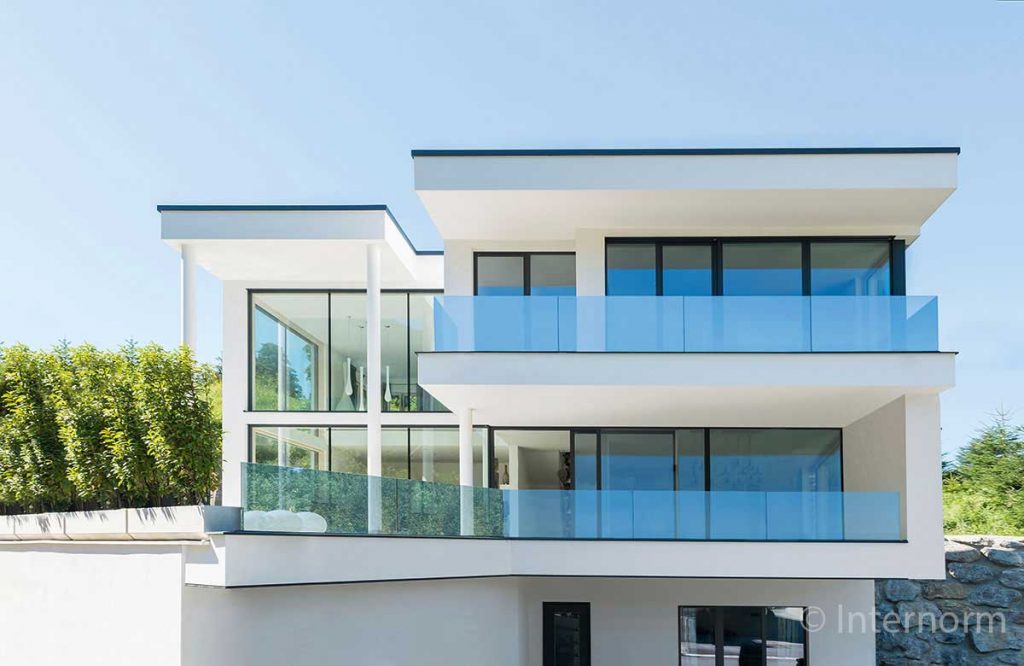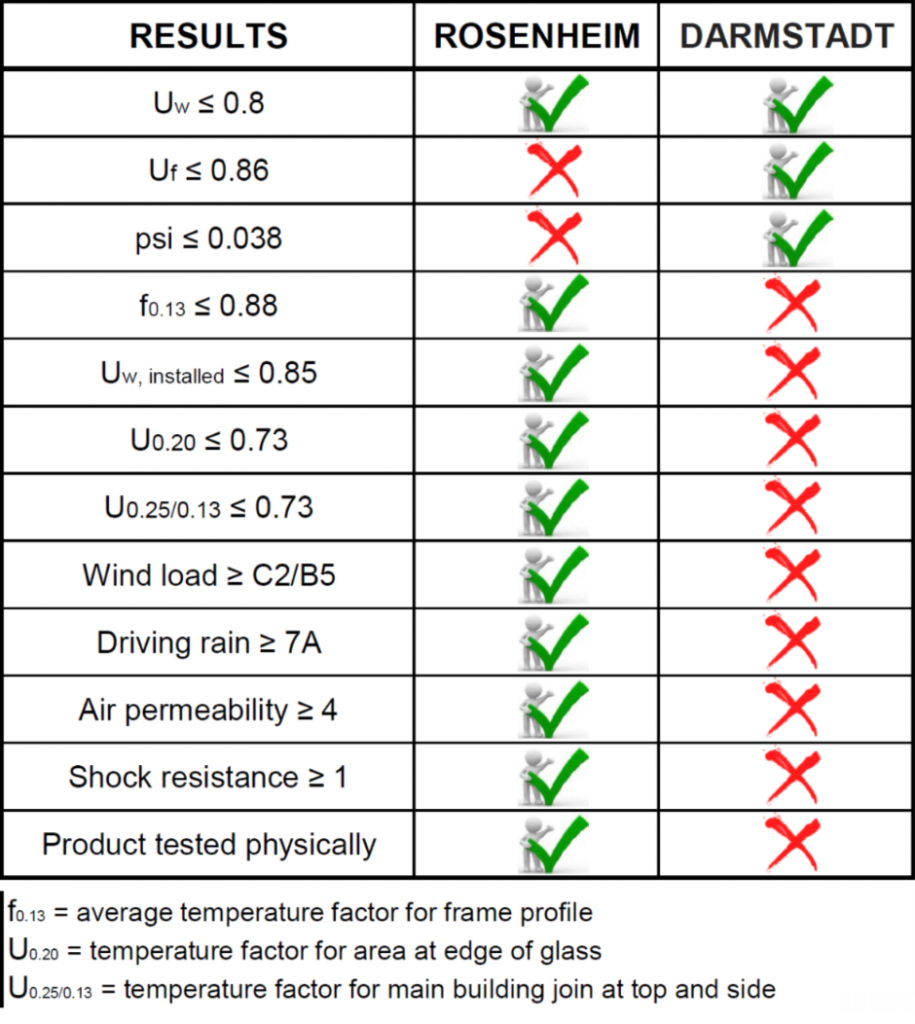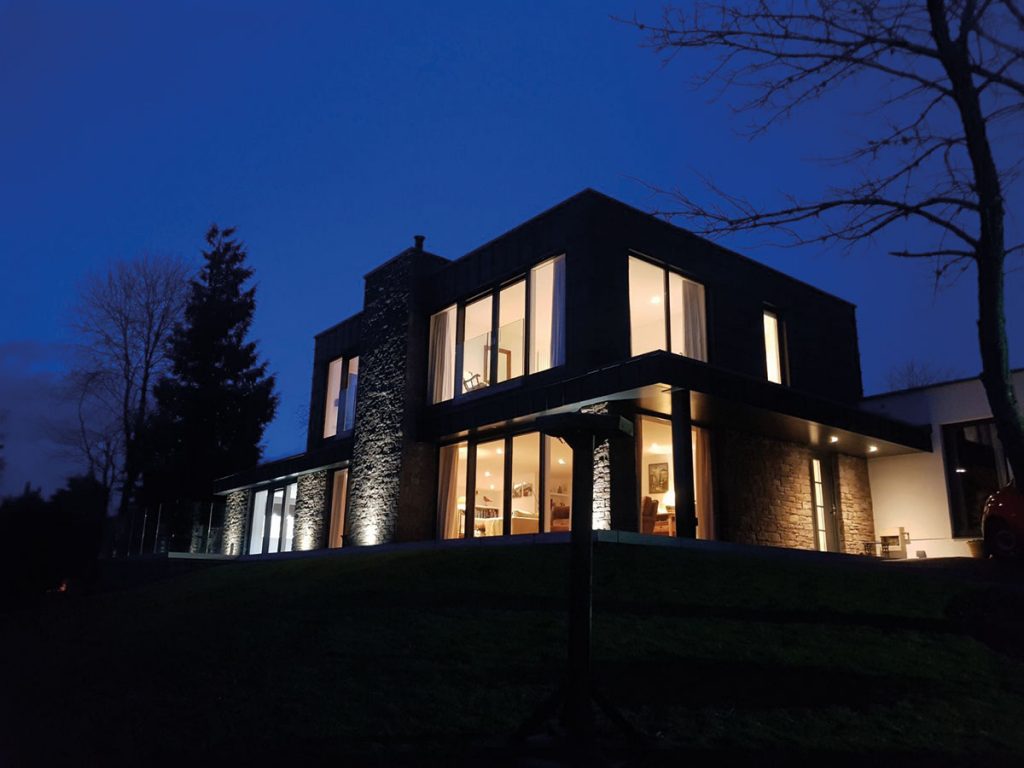Passive House is a construction standard that aims to create energy efficient homes. The aims are to make a thermally comfortable, eco-friendly, and affordable building all simultaneously. In turn, these elements work together to create a property that requires little or no energy for both your heating and cooling systems. With more people looking for a cost effective solution, Passive House ensures an insulated and ventilated system that retains heat without relying on central heating. So, how much electrical energy does a Passive House use?
How Much Electrical Energy Do Passive House Recommend?
Energy use is usually measured from the area and time, in the short term, kWh/m2yr. The larger the area, the smaller the energy use appears to be. Most standards that deal with energy use the total area of a building, whereas Passive House takes only the usable living area into account. Passive House is measured with a smaller area than others. Areas with lower ceilings are only partially taken into account whilst stairs, unheated areas etc, are not included – this is because it excludes any areas that cannot be used fully. This makes Passive House measurements more reliable than others.
Passivhaus homes specify no more energy being used than 120 kWh/m2yr. The main reason is that all energy, including heating, cooling, electricity, and other elements, is taken into account. Most standards usually leave electricity out, but Passive House considers this equally important. One of the main ways to compare energy requirements is to ensure that each refers to the same elements, so this can vary – so for more information, contact Internorm today.
In addition to this, Passivhaus buildings use their heat from internal sources. For example, waste heat from lightning, white goods and other electrical devices and even human body heat from the people inside the building (this is due to humans emitting an equivalent of 100 watts of radiated thermal energy)! With these elements, conventional heating is not required as often. Passive Houses sometimes have a dual purpose of 800-1,500 watt heating elements in their air supply (just in case of freezing temperatures). Still, their sustainable sources transform the need for central heating, saving you money on electric and heating bills!

Find Out How to Become Passive House Certified
If you want to become Passive House Certified and replace your windows with a stylish and energy efficient solution, Internorm UK provides exclusive double and triple glazed windows. You can take advantage of an increase in thermal performance with impressive U-values as low as 0.62 W/(m2K), which is below the Certified Passive House Window standards of 0.8 W/(m2K) – at no additional cost. You can have windows that reach Passive House standards throughout Internorm UK. Find out how to become Passive House Certified today!
At Internorm, we offer a variety of Passive House windows to suit their building standards. You can choose from Timber Aluminium, uPVC Aluminium and uPVC windows – all of which are reliable and low maintenance to provide noise reduction, high thermal performance and enhanced security, perfect for all house styles. Our wide section provides many customisation options, making your new home improvement solution completely bespoke to you. We can blend the design seamlessly with your current home style, whether that’s modern, traditional, new builds or heritage properties.
Passive House is a leading building standard that enables you to build a comfortable and low energy home, providing the very best high quality style and insulation – reducing your carbon footprint and maintaining an eco-friendly home. Why not keep sustainable with our Passive House windows?
Passivhaus Certification – What’s the Difference?
As the Passivhaus principal has been spreading all over the world, Germany has advanced the Passivhaus certification. Dr Feist, who founded the Passivhaus idea, is the owner of the private organisation “Passivhaus Institut” in Darmstadt, which developed this building standard 20 years ago and managed to spread it into many countries.
The independent test centre Rosenheim (like the BBA in the UK) has developed a new Passivhaus certification for windows and thereby has
achieved an official standard. Dr Feist is only interested in the thermal performance, whereas Rosenheim is also interested in the physical tests of the window and its performance, like water tightness, air permeability and shock resistance.
The thermal performance of Rosenheim’s certification is more detailed – it does not state the PSI or Uf value, but instead details the temperature factor of the glass edge and of the main building. It also measures the average
temperature factor of the frame profile as well as the Uw installed.

Get Your Sustainable Energy Products at Internorm UK
If you are looking for an eco-friendly option that blends style with practicality, Internorm’s Passive House Windows are ideal for your home. Our team are constantly striving to provide top quality and efficient customer service. All our Partners are experts in their field, with detailed product knowledge, meaning that you will get the best installation possible.
Are you looking to reduce your electricity and energy bills? Find your local Distribution Partner today and use our ‘Find Distribution Partner’ tool and get ready to discuss your sustainable solution. We look forward to hearing from you soon!
